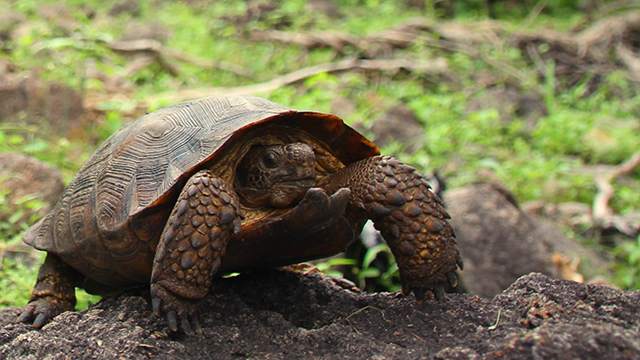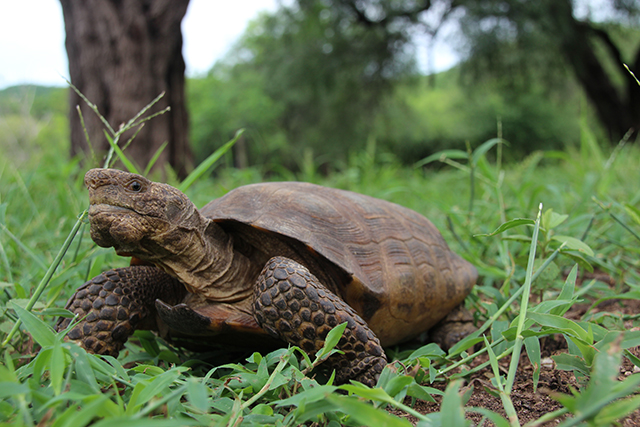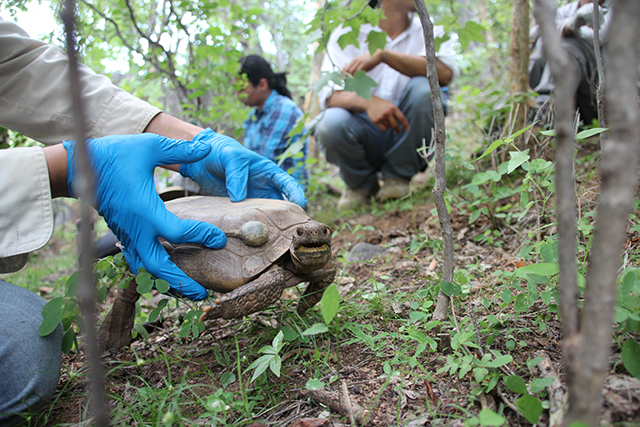Mexican Cartel lands are home to a newly described species: Goode’s Thornscrub Tortoise

There are now 342 species of turtles and tortoises described, up from 341 yesterday. Although new species are described almost every day, largely from taxonomic groups that include insects and other invertebrates, rarely do scientists describe a new reptile, mammal or bird species. It’s big news, and the team of scientists from the ROM, University of Arizona and the Comisión de Ecología y Desarrollo Sustentable del Estado de Sonora, Sonora, México, are rightfully ecstatic to announce the description of Goode’s Thornscrub Tortoise today.

An international team of researchers braved the lands of the Cartels in Mexico in pursuit of their interests in the research and conservation of the desert tortoises. They discovered Goode’s Thornscrub Tortoise in Sonora and Sinaloa, in northern Mexico. The small (about 24,000 km square) area where these critters live is smack dab in the middle of lands which are monitored and used by various Cartels in Mexico, making for tricky field work at times!

What was previously thought to be a single species turns out to be three. The two previously described tortoises in this complex, Agassiz’s Desert Tortoise and Morafka’s Desert Tortoise, live in the Mojave Desert from southern Utah to southern California and from Arizona to central Sonora, respectively. Leading edge genetic work documented the existence of the new species. Goode’s and Morafka’s tortoises live side-by-side and occasionally they hybridize, just like Neanderthals and humans once did. However, most individual tortoises appear to stick to their corresponding habitats and they even have different preferred body temperatures.
The latin name of the new find, particularly the last part, or species name, Gopherus evgoodei, is in honour of the magnanimous efforts of businessman and philanthropist Eric V. Goode who is dedicated to helping secure land for the survival of turtles and tortoises on a global scale, and in particular Goode’s Thornscrub Tortoise in Mexico. Eric also founded the Turtle Conservancy; for more information, visit www.turtleconservancy.org.
Read the press release here
